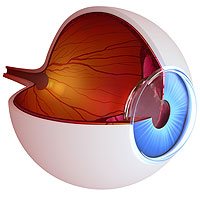
Are you beginning to experience blurry or cloudy vision? Is it difficult to drive at night? These are common symptoms of cataracts. Keep reading for more signs that you may have cataracts!
What is a Cataract?
Cataracts occur when the lens in your eye becomes cloudy. The natural lens of the eye is clear. When you have a cataract, it’s a lot like looking through a foggy window.
Having cloudy vision because of cataracts makes driving at night much harder. Any kind of detail-oriented task, like reading, becomes more difficult as well.
Cataracts are a natural part of the aging process and affect almost everyone.
Vision Changes
Most people with cataracts don’t notice them, at least not at first. Cataracts take time to develop. As a result, you may not realize you have one when it starts developing.
A newly developed cataract may not even impact your vision. As time goes on, your vision will slowly become affected. It’s for this reason that you should always have regular eye exams.
Eye exams are the only way an eye doctor can diagnose you with cataracts. Having them on a regular basis gives your eye doctor a baseline of how your cataract is developing.
If cataracts make everyday tasks too difficult, they’ll consider if you need cataract surgery.
Typical vision changes with cataracts include having a foggy, blurry, or faded vision. Early on, cataracts start off tiny. As they develop, cataracts get larger, and your vision may become fuzzier as a result.
With cataracts, you may develop a sensitivity to light. Some people see glares or halos around lights.
Usual light levels might be too strong if you have cataracts. If you look right at a light, you might see light radiating out of it like a halo.
Additionally, a common symptom is having double vision in one of your eyes. When cataracts make your lens cloudy, it becomes difficult for light to enter. This causes you to have double vision.
Difficulty Driving at Night
Cataracts can make it very difficult to distinguish between light and dark. Some people get headaches from headlights and streetlamps when driving at night.
Also, you may see halos around lights while you are attempting to drive.
Needing Stronger Light
You might need brighter or more light while you are trying to do tasks or activities that need a lot of focus. Increased light can be helpful for reading or trying to sew.
In the beginning, more light could be beneficial. As your cataracts mature, having more light will not help.
Color Discoloration
As cataracts increase in size, colors start to become less vibrant and faded. An example is that whites will start looking more like yellow.
You may also notice that colors look more brown or yellow-tinted. This is because your cataract can make everything around it look discolored.
Frequent Changes To Your Glasses or Contact Lens Prescriptions
As your cataracts develop, your vision changes too. You can go from not needing reading glasses to needing frequent new prescriptions.
When you have sudden vision changes, it is often a symptom of having cataracts.
When vision changes affect your life, talk to your eye doctor about if it’s time for cataract surgery.
Are these signs familiar to you? If so, you might have cataracts. Schedule a cataract screening at Eye Care Specialists in Bloomsburg, PA today to find out!

















